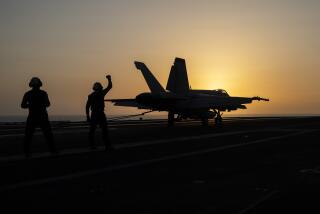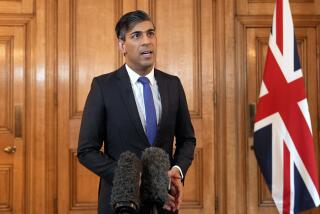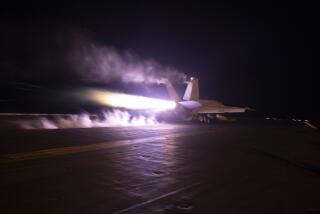How not to strike at pirates
Buoyed by the remarkable marksmanship of U.S. Navy SEALs against Somali pirates, a debate has emerged about the wisdom of bombing the pirates’ support infrastructure onshore in Somalia. Given the painful memory of 18 U.S. soldiers killed in 1993 in Mogadishu in the “Black Hawk Down” battle, deploying U.S. ground forces in Somalia is not seriously being considered, making airstrikes the best military option.
However, before unleashing the United States’ vast arsenal of long-range air power against impoverished seaside villages, it is important to recall that the U.S. has already bombed Somalia five times in the last 2 1/2 years with little military or political success, according to media reports. These results show that intermittent attacks against militants in a failed state are no substitute for the long, hard work of building a viable political entity in control of its territory.
Although little reported on, U.S. military and intelligence agencies have been heavily involved in Somalia during the last four years. In 2006, the U.S. failed in secret negotiations with Somali clans to gain information about the whereabouts of three highly sought Al Qaeda operatives who were believed to be behind the 1998 U.S. embassy bombings in Africa and the 2002 attacks against an Israeli airliner and a hotel in Kenya.
On Christmas Eve 2006, with U.S. support in the form of detailed intelligence and military training, Ethiopia invaded Somalia with the goal of unseating the ruling Islamic Courts Union, or ICU. As the Ethiopian offensive overwhelmed the ICU defenses, Somali militants and Al Qaeda affiliates fled south, tracked by the United States via Predator drones and cellphone intercepts.
On Jan. 7, 2007, a U.S. Air Force special operations AC-130 gunship flying out of Ethiopia fired on a convoy of escaping Islamic militants near the village of Ras Kamboni in Somalia. Although perhaps 10 Somali militants died in the attack, none were the targeted Al Qaeda operatives.
Fifteen days later, an AC-130 attacked Sheik Ahmed Madobe, an ICU senior leader, but failed to kill him. According to U.S. officials, Madobe was later captured by Ethiopia.
Several months later, fishing boats containing armed Al Qaeda affiliates -- including the highly sought Fazul Abdullah Mohammed -- landed at the northern Somali fishing port of Bargal and found themselves engaged in a gun battle with local police. After the regional government appealed to U.S. forces in Djibouti for help, on June 1, 2007, a Navy destroyer in the Red Sea fired several cruise missiles against the suspected Al Qaeda affiliates. The following day, U.S. special operations forces found the remains of eight militants, but Fazul Abdullah Mohammed survived and remained at large.
On March 3, 2008, a U.S. submarine fired cruise missiles at a house in the Somali town of Dobley. The target was Saleh Ali Saleh Nabhan, wanted by the FBI for his involvement in the 2002 attacks against the Israeli airliner and the hotel in Mombasa. Several suspected militants and civilians were killed or wounded, but not Nabhan.
Finally, after being tracked by communications intercepts and satellite imagery for weeks by U.S. intelligence, on May 1, 2008, Aden Hashi Ayro an operative in Al Qaeda’s East Africa network, and several aides were killed in a volley of cruise missiles fired from a U.S. naval vessel into a compound in the central Somali town of Dusa Marreb.
The available evidence demonstrates that four of the five attacks failed to kill their intended targets. Furthermore, the airstrikes have done nothing to deter Islamic militants -- some with Al Qaeda sympathies -- from using Somalia as a haven to recruit foreign fighters and plan terrorist operations.
In December, the U.N. Security Council passed Resolution 1851, which authorized member states to “undertake all necessary measures that are appropriate in Somalia, for the purpose of suppressing acts of piracy and armed robbery at sea.”
At the time, Vice Admiral William Gortney, commander of the U.S. 5th Fleet, warned of the high likelihood of innocent civilians being killed in efforts to target pirates: “I see people trying to look for an easy military solution to a problem that demands a nonkinetic solution.”
Those calling for the pirates’ support infrastructure to be bombed should consider how ineffective these recent U.S. attacks against Al Qaeda operatives have been, and the highly uncertain effects of future military operations against the failed state.
More to Read
Sign up for Essential California
The most important California stories and recommendations in your inbox every morning.
You may occasionally receive promotional content from the Los Angeles Times.









